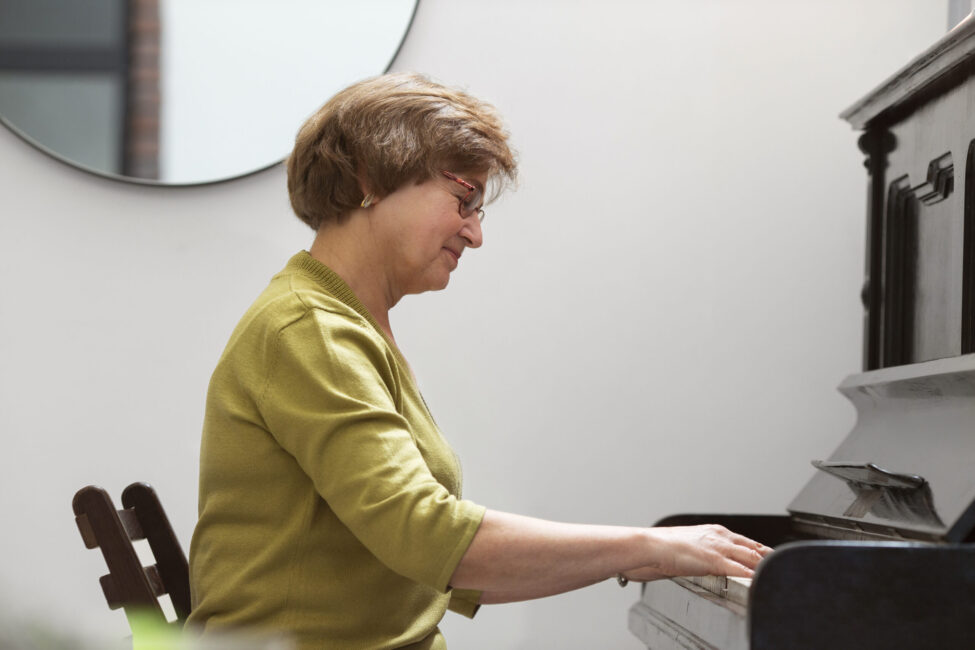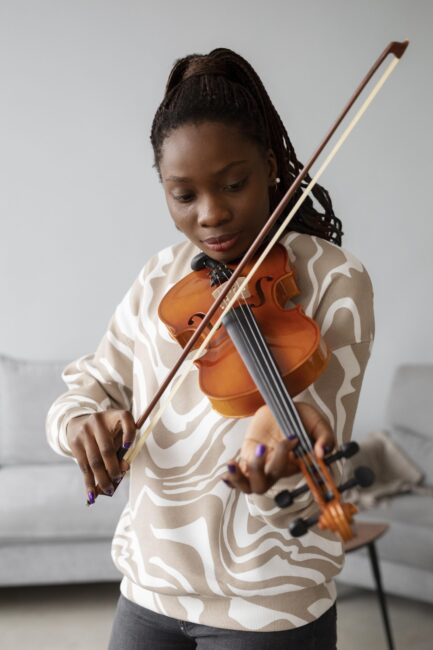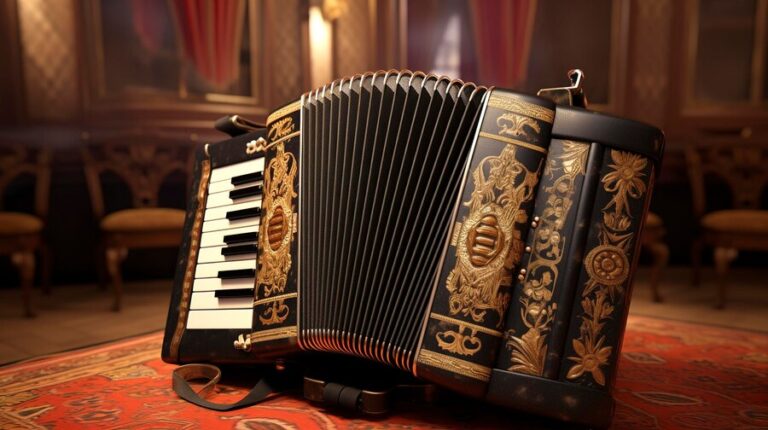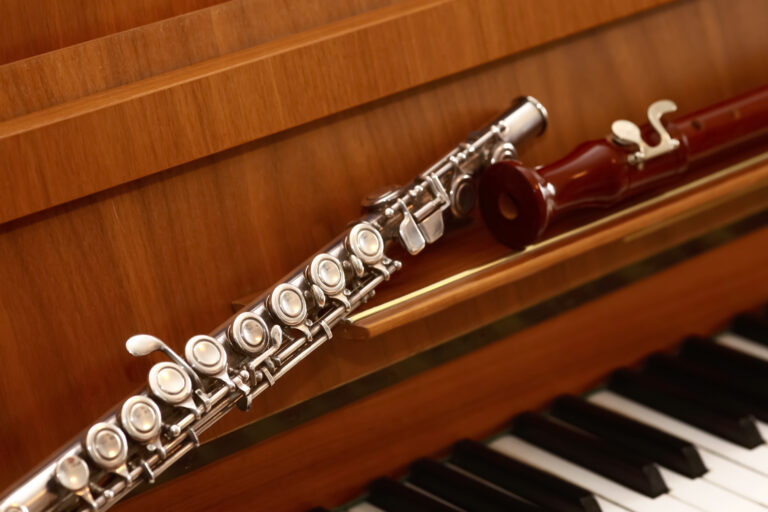The Great Debate: Piano or Violin – Which Should You Choose?
Have you ever found yourself torn between the enchanting melodies of a piano and the soul-stirring sounds of a violin? As two of the most beloved instruments in the world, the piano and the violin have captured the hearts of music enthusiasts for centuries. But how do they compare? In this article, we’ll take a direct comparison and contradiction approach to explore the differences and similarities between these two magnificent instruments.
While both the piano and the violin are stringed instruments, they differ greatly in terms of their design and how they’re played. The piano is a keyboard instrument that produces sound by striking strings with hammers, while the violin is played by drawing a bow across its strings. Yet, despite these differences, both instruments have the ability to produce a wide range of notes and tones, making them versatile and suitable for various genres of music.
Whether you’re a beginner or an experienced musician, understanding the differences and similarities between the piano and the violin can help you choose the instrument that best suits your interests and goals. So, join us as we embark on a journey of discovery to unravel the mysteries of these two beloved instruments.
Overview of Piano and Violin
When it comes to musical instruments, the piano and violin are two of the most popular and widely recognized. Each instrument has its own unique characteristics and playing style, making them both appealing to different types of musicians.
The piano is a keyboard instrument that produces sound by striking strings with hammers. It is a versatile instrument that is used in a variety of musical genres, from classical to jazz to pop. The piano is known for its ability to play both melody and accompaniment at the same time, making it a popular choice for solo performances and accompaniment in ensembles.
On the other hand, the violin is a string instrument that is played with a bow. It produces sound by vibrating the strings with the bow, and the pitch can be changed by pressing down on the strings with the fingers. The violin is known for its expressive and emotional capabilities, making it a popular choice for solo performances and orchestral settings.
In terms of physical characteristics, the piano is a large and heavy instrument that requires a significant amount of space to play. It has 88 keys and can produce a wide range of sounds, from soft and delicate to loud and powerful. The violin, on the other hand, is a smaller and more portable instrument that can be played while standing or sitting. It has four strings and can produce a range of sounds, from sweet and mellow to bright and intense.
Music is a diverse and ever-evolving art form, with countless instruments to choose from. The piano and violin are just two examples of the many beautiful instruments that exist. While they each have their own unique qualities, they both hold a special place in the hearts of musicians around the world. Whether you’re drawn to the versatility of the piano or the emotional expressiveness of the violin, there’s no denying the power of these instruments to move and inspire us. So, whatever your musical preference may be, let the beauty of these instruments guide you on your musical journey.
Physical Characteristics
Piano Structure
When it comes to physical characteristics, pianos are generally larger and heavier than violins. A typical grand piano can weigh up to 1,200 pounds, while a violin usually weighs less than 1 pound.
The piano has a rectangular shape and is made up of numerous parts, including the soundboard, the keys, the hammers, and the pedals. The soundboard is responsible for amplifying the sound produced by the strings, while the keys are used to produce different notes. The hammers strike the strings to produce sound, and the pedals are used to change the tone and sustain the sound.

Violin Structure
In contrast, the violin is a much smaller and more compact instrument. It consists of four strings stretched over a hollow wooden body, with a bridge that supports the strings and allows them to vibrate freely. The strings are played with a bow, which is made of horsehair, and the sound is produced by the vibration of the strings.
The violin is a highly versatile instrument that can produce a wide range of sounds, from soft and mellow to bright and piercing. It is also highly portable, making it a popular choice for musicians who need to travel frequently.
When it comes to musical instruments, size and weight can make a big difference. The piano and violin are both stringed instruments, but they couldn’t be more different in terms of their physical characteristics. The piano is a massive and complex instrument, with a heavy frame and intricate mechanisms. In contrast, the violin is a small and delicate instrument that can be easily carried from place to place. Despite their differences, both instruments have their own unique charm and beauty – and that’s what makes the world of music so endlessly fascinating and diverse.

Sound Production
Piano Sound
When playing the piano, the sound is produced by hammers striking the strings inside the instrument. The strings are set in motion and vibrate, producing a sound that resonates throughout the piano’s body and is projected out through the soundboard. The sound produced by a piano is rich and full, with a wide range of tones and dynamics. The piano’s sound can be modified by the player’s touch and the use of pedals.
Violin Sound
In contrast, the sound of a violin is produced by the vibration of the strings themselves. The player uses a bow to create friction against the strings, causing them to vibrate and produce sound. The sound produced by a violin is more focused and direct than that of a piano, with a narrower range of tones and dynamics. The sound can be modified by the player’s bowing technique, finger placement, and the use of mutes.
Overall, both the piano and the violin produce beautiful and unique sounds. The piano has a wider range of tones and dynamics, while the violin’s sound is more focused and direct. It ultimately comes down to personal preference and the type of music being played as to which instrument produces the desired sound.
Learning Curve
Learning Piano
When it comes to learning the piano, the learning curve can be steep, especially for beginners. The piano has 88 keys, which can be overwhelming for some. However, with consistent practice, you can quickly learn the basics and start playing simple songs.
One advantage of learning the piano is that the notes are laid out in a logical and straightforward manner. This makes it easier to understand music theory and how to read sheet music. Additionally, the piano is a versatile instrument that can be used in a wide variety of genres, from classical to jazz to pop.
To make learning the piano easier, it is recommended that you take lessons from a qualified teacher. They can help you develop proper techniques and provide guidance on how to practice effectively. It is also essential to practice regularly and set achievable goals to keep yourself motivated.
Learning Violin
Learning the violin can be a challenging and frustrating experience. The instrument has a steep learning curve, and it can take years to master. One of the most challenging aspects of learning the violin is developing the correct posture and holding the instrument correctly.
Another challenge with the violin is that there are no frets or keys, which means that you need to rely on muscle memory to find the correct notes. This can be difficult for beginners, and it takes time to develop the necessary skills.
Despite the challenges, learning the violin can be rewarding. It is a beautiful instrument that can evoke a wide range of emotions. Additionally, the violin is a versatile instrument that can be used in a variety of genres, from classical to folk to rock.
To make learning the violin easier, it is recommended that you take lessons from a qualified teacher. They can help you develop proper techniques and provide guidance on how to practice effectively. It is also important to practice regularly and set achievable goals to keep yourself motivated.
Versatility and Genre
When it comes to versatility and genre, both the piano and the violin have their strengths and weaknesses. The piano is a highly versatile instrument that can be used in a wide range of genres, including classical, jazz, pop, and rock. It can be used as a solo instrument, as well as in ensembles and orchestras. The piano’s versatility lies in its ability to produce a wide range of sounds, from soft and delicate to loud and powerful.
On the other hand, the violin is often associated with classical music, but it is also used in other genres such as folk, country, and bluegrass. While the violin may not be as versatile as the piano in terms of the range of genres it can be used in, it has a unique sound that is difficult to replicate with any other instrument. The violin’s versatility lies in its ability to produce a wide range of emotions, from joy and happiness to sadness and melancholy.
When it comes to playing in different genres, the piano is often the instrument of choice for beginners due to its versatility. However, mastering the piano can take years of practice, and it can be a challenging instrument to play well. The violin, on the other hand, is often considered one of the most difficult instruments to play due to its complex technique and the need for precise intonation.
Choosing between the piano and violin is no easy task. Both instruments have their own strengths and weaknesses when it comes to versatility and genre. The piano is a chameleon-like instrument that can adapt to almost any style of music, from classical to jazz to pop. On the other hand, the violin has a unique sound that is instantly recognizable and difficult to replicate with any other instrument. Whether you’re drawn to the versatility of the piano or the emotional expressiveness of the violin, the choice ultimately comes down to your personal preferences and goals. So, take your time, explore your options, and let your heart guide you to the instrument that speaks to you the most.
Cost Comparison
Piano Cost
When it comes to purchasing a piano, the cost can vary greatly. The price range can start from a few hundred dollars for a used upright piano to tens of thousands of dollars for a new grand piano. The cost is largely determined by the type of piano, the size, and the brand.
For example, an upright piano can cost anywhere from $500 to $10,000, depending on the quality and age. A baby grand piano can cost between $10,000 and $50,000, while a concert grand piano can cost upwards of $100,000.
In addition to the initial cost of purchasing a piano, there are also ongoing maintenance costs to consider. Tuning a piano can cost around $100 to $200 per tuning, and should be done at least twice a year. Repairs can also be costly, especially if the piano requires major repairs or replacement parts.
Violin Cost
The cost of purchasing a violin can also vary greatly. A beginner’s violin can cost as little as $100, while a professional violin can cost tens of thousands of dollars. Like pianos, the cost is largely determined by the brand, quality, and size.
For example, a beginner’s violin can cost between $100 and $500, while a high-quality violin can cost between $5,000 and $20,000. Professional violins can cost upwards of $50,000.
In addition to the initial cost of purchasing a violin, there are also ongoing maintenance costs to consider. Like pianos, violins require regular maintenance, including tuning and repairs. The cost of tuning a violin can range from $20 to $50 and should be done at least once a year. Repairs can also be costly, especially if the violin requires major repairs or replacement parts.
When it comes to musical instruments, the price tag is just the beginning. While the initial purchase price of a piano or violin is certainly an important consideration, it’s just the tip of the iceberg. Ongoing maintenance costs can add up quickly, especially when it comes to high-quality instruments. While a high-end violin may have a lower price tag than a comparable piano, the cost of regular maintenance and repairs can be just as significant. So, before you make your decision, be sure to consider all of the costs involved – both upfront and over time.
Maintenance and Care
Piano Maintenance
When it comes to maintaining your piano, there are a few things you should keep in mind. First and foremost, it’s important to keep your piano clean and free of dust and debris. You can use a soft cloth to wipe down the keys and the exterior of the piano, and a vacuum cleaner with a soft brush attachment to clean the inside of the piano.
It’s also important to keep your piano in tune. This can be done by a professional piano tuner, and it’s recommended that you have your piano tuned at least once a year. Additionally, you should have your piano serviced regularly to ensure that all of the parts are functioning properly.
Violin Maintenance
Maintaining your violin is also important if you want it to sound its best. One of the most important things you can do is to keep your violin clean. You can use a soft cloth to wipe down the body of the violin and the strings, and a small brush to clean the rosin off of the bow.
It’s also important to keep your violin in good condition. This means storing it in a case when you’re not playing it, and making sure that the strings are properly tightened and tuned. Additionally, you should have your violin serviced by a professional if you notice any issues with the sound or the condition of the instrument.
Overall, both the piano and the violin require regular maintenance to ensure that they sound their best. By taking good care of your instrument, you can enjoy playing it for years to come.
Best for: Where can you play?
When it comes to deciding between the piano and the violin, one of the factors that you should consider is where you can play the instrument. Both instruments have their own unique features that make them suitable for different types of venues.
Piano
The piano is a versatile instrument that can be played in a wide range of settings. It is commonly found in concert halls, recital venues, and music schools. In addition, many restaurants, hotels, and other public spaces have pianos available for guests to play.
If you are interested in playing in a group, the piano is a great choice. It is often used in ensembles, orchestras, and bands. And if you prefer to play alone, the piano is also a great solo instrument.
Violin
The violin is a popular instrument in classical music and is often used in orchestras and chamber music ensembles. It is also commonly used in folk music, jazz, and other genres.
If you are interested in playing in a group, the violin is a great choice. It is often used in ensembles, orchestras, and bands. And if you prefer to play alone, the violin is also a great solo instrument.
However, the violin is not as versatile as the piano when it comes to playing in different settings. It is not as commonly found in public spaces and may require more specialized venues for performances.
Choosing the right instrument is a deeply personal decision that depends on a variety of factors. When it comes to the piano and violin, both instruments have their own unique features and appeal. If you’re drawn to the piano’s versatility and grandeur, you may want to consider playing in a concert hall or recording studio. On the other hand, if you’re looking for a more intimate and emotional experience, the violin may be the perfect choice for you. Ultimately, the decision comes down to your personal preferences and goals. So, take some time to explore your options, consider your musical aspirations, and let your heart guide you to the instrument that’s right for you.
Conclusion
Both the piano and violin have unique characteristics that offer different playing experiences, as we’ve discovered. The piano is the clear winner in terms of versatility, as it can play a wide range of genres and styles. However, if you’re looking for an instrument that allows you to convey emotions through subtle nuances, the violin is the better choice.
One of the main differences between these two instruments is the way they produce sound. While the piano has a percussive sound, the violin has a more sustained sound that can be manipulated through various techniques like vibrato and glissando.
Both instruments require a significant amount of practice and dedication to master, but the piano is generally considered easier to learn due to its straightforward layout and the fact that you can see all the notes at once. The violin, on the other hand, requires more physical dexterity and a better understanding of intonation.
Ultimately, the choice between the piano and violin comes down to personal preference and the type of music you want to play. If you’re interested in classical music or want to play in orchestras, the violin may be the better choice. However, if you’re looking for an instrument that can play a wider range of genres and styles, the piano is the way to go.
In summary, both the piano and violin are great instruments with their own strengths and weaknesses, making it an exciting decision for any aspiring musician. So, choose wisely and enjoy the journey of mastering the instrument that speaks to you.
Frequently Asked Questions
Is piano or violin more difficult to learn?
Learning any instrument requires dedication and practice, but the difficulty level can vary from person to person. Both the piano and violin have their own unique challenges. The piano requires a good sense of rhythm and hand-eye coordination, while the violin requires good ear training and finger dexterity. Ultimately, it comes down to personal preference and which instrument you are more drawn to.
Which is better for a child to learn, piano or violin?
Both the piano and violin are great instruments for children to learn. The piano provides a strong foundation in music theory and helps develop finger strength, while the violin helps with ear training and fine motor skills. It’s important to consider your child’s interests and personality when deciding which instrument to learn.
What are the differences between the sound characteristics of a violin and a piano?
The sound of a violin is produced by the vibration of strings, which creates a warm and expressive tone. The piano, on the other hand, produces sound by striking strings with hammers, resulting in a more percussive sound. The piano has a wider range of notes and can play multiple notes simultaneously, while the violin has a more limited range and can only play one note at a time.
What are the similarities between playing the violin and playing the piano?
Both the violin and piano require good posture and hand positioning. They also require a good sense of rhythm and timing. Additionally, both instruments can be played solo or in an ensemble setting.
Should I buy/learn piano or violin first?
It ultimately depends on your personal preference and goals. If you’re interested in classical music, the piano may be a good choice as it provides a strong foundation in music theory. If you’re interested in folk or traditional music, the violin may be a better fit. It’s important to consider your budget, available practice space, and time commitment when making this decision.






